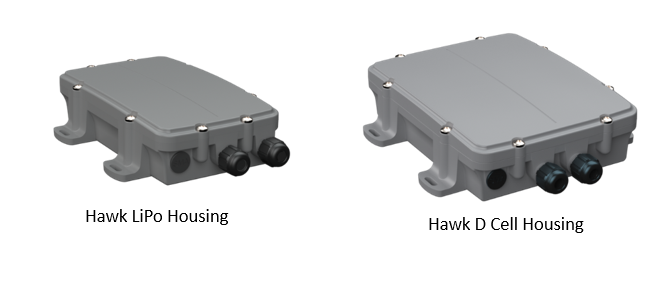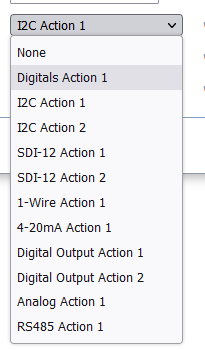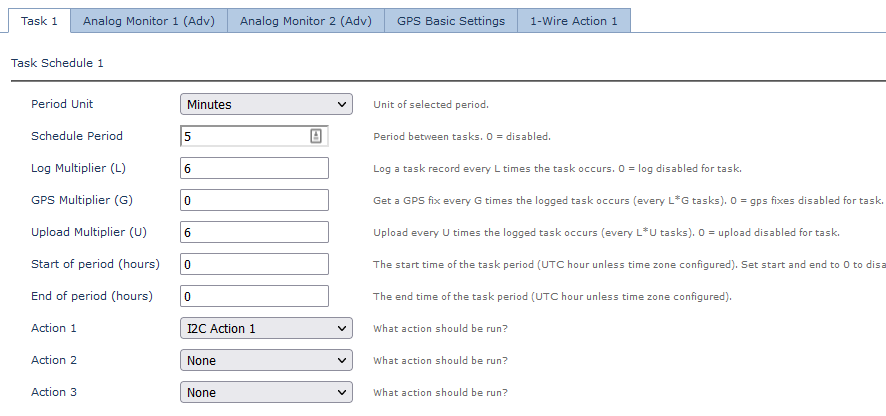Hawk Introduction and Concepts
Table of Contents
The Hawk is a rugged and robust IoT datalogger for a wide range of sensor and condition monitoring applications.
Hawk Introduction
The Hawk Lite vs the Hawk Pro
The Hawk Lite is a version of the Hawk Pro that is compatible with low-voltage Alkaline batteries, as opposed to the high-energy LTCs and rechargeable LiPo of the Hawk Pro.
For more information, please see:
Key Features:
- Completely modular logging device.
- Build your own solution with your choice of
- PCB
- Pro - The original Hawk, unmatched in its flexibility.
- Lite - low power alternative
- IO Card
- See up to date range here
- PCB
- Plug-in I/O Interface
- GPS Location
- Powerful task management allows you to schedule tasks or run tasks based on sensor thresholds and events
- Select from a variety of power options, including
- Large 3500mAh rechargeable LiPo battery pack (Pro PCB Only)
- The rechargeable LiPo battery is compatible with external power options including solar or mains power.
- 2 x LTC D Cell Batteries (Pro PCB Only)
- Order a Hawk PCB with the D Cell housing option for a non-rechargeable, but extremely long-lasting alternative to the LiPo option.
- Digital Matter doesn't supply batteries. For advice on which batteries to choose please see Device Battery Suggestions.
- 2 x Alkaline D Cell Batteries (Lite PCB Only)
- Large 3500mAh rechargeable LiPo battery pack (Pro PCB Only)
- A variety of Power Out options (SWGND, 3.3V, 5V/12V Vboost) allows the Hawk to provide power to your sensors.
- 2 x Ultra-rugged IP68-rated housings.
- The D Cell Housing is available with or without a GORE® vent.
- Currently, the Hawk is only available in LTE-M/NB-IoT connectivity.
- A satellite version is planned for 2024.

Hawk Pro Resources
Full Technical Specifications:
Key Technical Specifications
- 6-28V (max) input voltage range
- For continuous operation at high temperatures and high output load currents, we recommend an input voltage of 12V or higher
- LTE-M/NB-IoT modem
- Nano 4FF SIM card
High-Resolution Images
Download high-resolution images for the Hawk here: High Res Images
Device Manager Documentation
Device parameters and firmware are configured via our Device Manager interface. Make sure to check out the resources here. In particular Device Manager- Getting Started
Technical Support and Advice
Digital Matter partners should Contact Support for any product issues or enquiries.
Device Warranty
The Hawk is backed by a 2-year manufacturer's warranty. See Digital Matter Warranty Returns Policy for details.
Hawk Lite Resources
Full Technical Specifications:
Key Technical Specifications
- 5.5V (max) input voltage range
- LTE-M/NB-IoT modem
- Micro 4FF SIM card
High-Resolution Images
Download high-resolution images for the Hawk here: High Res Images
Device Manager Documentation
Device parameters and firmware are configured via our Device Manager interface. Make sure to check out the resources here. In particular Device Manager - Getting Started
Technical Support and Advice
Digital Matter partners should Contact Support for any product issues or enquiries.
Device Warranty
The Hawk Lite is backed by a 2-year manufacturer's warranty. See Digital Matter Warranty Returns Policy for details.
It is helpful to understand key concepts around the Hawk.
Hawk Pro PCB
The Hawk unit itself we refer to as the 'baseboard'/'motherboard'/'host'/PCB. Key components of the baseboard are:
- Modem to allow for data upload.
- Currently LTE-M/NB-IoT. Satellite planned for 2024.
- External power input + backup battery
- Microcontroller + Memory to store and process records
- I/O screw-in terminals
- Vin, GND and Digital Input 1 are inherent to the baseboard
- I/O 1 → I/O 9 are used by the plug-in card to connect sensors and other I/Os.
This format allows for flexibility in I/O selection, and which sensors we can connect to.
Hawk Lite PCB
The Hawk unit itself we refer to as the 'baseboard'/'motherboard'/'host'/PCB. Key components of the baseboard are:
- Modem to allow for data upload.
- Currently LTE-M/NB-IoT
- External power input
- Microcontroller + Memory to store and process records
- I/O screw-in terminals
- Vin, GND and Digital Input 1 are inherent to the baseboard
- I/O 1 → I/O 9 are used by the plug-in card to connect sensors and other I/Os.
This format allows for flexibility in I/O selection, and which sensors we can connect to.
Input/Output Cards
Any customer's application could require different sensor types and input combinations.
For example, someone might require I²C for a temp sensor, SDI-12 for soil moisture, and a digital input for a pulse count. A different application may require 3 x Digital Inputs and RS485.
New card types are continuously being developed, and can be seen here: Hawk Baseboard + Plug in Cards - Wiring+Pin Out.
If you require a specific interface or combination of interfaces for an application - it is possible for Digital Matter to produce custom card types. If you're interested in this, please contact support.
Card & Baseboard Communication
The Hawk can request the card to perform actions, such as:
- Sample the Analogue input, and return the value
- Read from the SDI-12 probe and return the values
- Turn on the 3V3, SW Ground or VBoost outputs
The data is returned to the Hawk by setting Hawk Digital Inputs, Analogue values and special data fields (like SDI-12 data field)
Cards can also raise events, such as a digital input change. The Hawk will receive this event and then can be configured to take immediate action (i.e. log and upload the event)
Tasks
The Hawk's parameters are centred around the concept of a 'task'.
A task is a set of actions. A task can be scheduled (e.g. hourly) or run in response to an event (digital input change or analogue threshold).
Actions are shown below - they are either reading a sensor, or turning on an output.

Tasks are configured with the below key intervals
- Schedule Period - how often we perform the task
- Logging Multiplier - Log every L times the task occurs
- Upload Multiplier - Upload every U logs
- GPS interval - Get a GPS fix every G logs
This allows for options like:
- Sampling a sensor frequently (say every 5 min) - to monitor its value against a threshold and action accordingly, but only logging a record every 15 to reduce data usage and server load
- Setting the GPS interval to 0 or a very large number, to get a fix infrequently or not at all if not required - increasing battery life
- Sample and log a value every 10 min, but upload hourly

